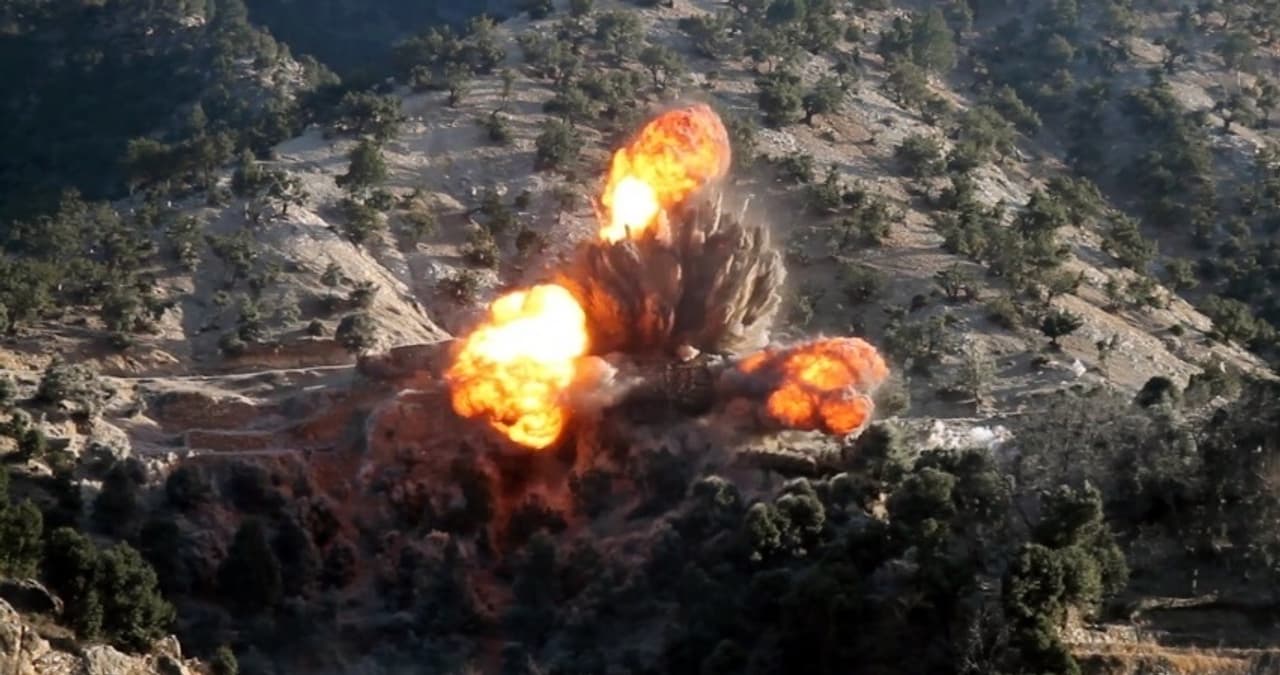
Concern over civilian casualties as US hits 66 buildings
US military aircraft bombed over 60 buildings in Afghanistan in October alone, reviving longstanding concerns that these kinds of strikes risk higher numbers of civilian casualties.
Newly released data from Operation Resolute Support, the US-led NATO mission in Afghanistan, show that 66 buildings were destroyed over the course of the 392 strikes carried out last month.
Strikes on buildings are more likely to cause civilian casualties because it’s difficult for those launching them to see who is inside. In response to rising concerns about the levels of civilian deaths in Afghanistan in 2008, Gen. Stanley McChrystal, who was then serving as the top US commander in Afghanistan, banned air strikes that targeted residential buildings except in the most extreme cases.
It is not clear how many of the buildings targeted in October would meet that criteria, but a further directive was issued after a spate of civilian deaths in 2016, which stated that attacks on any kind of building had to be approved by top commanders.
When asked whether the number of strikes on buildings in October meant that the most recent rule had been relaxed, a US military spokesperson said that was not the case.
The recent bombing statistics come as the United Nations warns of a “worrying” increase in civilian casualties caused by US airstrikes. The number of US strikes leading to civilian casualties during the first nine months of this year were more than double the figures for the same period last year, according to the UN. The reasons behind this rise are unclear, but civilian casualty expert Larry Lewis said it was "possible" that a more relaxed culture of approving strikes on buildings could be playing a role.
“Destroying 60 buildings in a month means that twice a day, international forces are conducting the riskiest kind of strikes for civilians: structures where there is uncertainty of who may be inside them,” said Lewis, the director of the Center for Autonomy and Artificial Intelligence at the Center for Naval Analyses. "I would hope that forces in Afghanistan are doing a rigorous review of these strikes and all allegations to monitor this risk ... That’s something that didn’t happen in Mosul, and the human cost was tremendous."
The Bureau of Investigative Journalism has previously reported on the dangers such strikes pose to civilians. In 2014, we worked with the research group Forensic Architecture to map where drone strikes hit in Pakistan, discovering that 61% of the strikes in the drone campaign there targeted houses, killing an estimated 222 civilians in more than 280 strikes.
It has been impossible to properly track the escalating U.S. air war in Afghanistan for much of 2018 because the US military abruptly stopped releasing detailed information about its operations and strikes at the end of last year. After the Bureau and other news organisations raised concerns about this lack of transparency, Resolute Support finally started publishing the information again in September, adding more detail on the locations and targets of strikes. This is the first time the Bureau, which has been tracking the US air war in Afghanistan since 2015, has been able to produce an analysis of US targets.
Data from the previous month showed that US strikes had destroyed three buildings and 30 other structures. However, the US military did not explain how they defined a structure as opposed to a building.
With only two months of data so far available, it’s hard to draw conclusions about targeting patterns just yet. But monitoring them will be a vital task in the months ahead. The tempo of the Afghan war seems to be creeping up: recent days have seen three US servicemen killed and reports of large civilian casualties from airstrikes in Helmand province. How bad this escalation proves for civilians will be partly determined by the kind of targeting practices in place, which tend to be kept secret. Tracking data on strike locations is one of the few ways that the general public can get a sense of how the US air war in Afghanistan is being conducted. Its continued supply is of critical importance.
Main photo: A strike hit Nangarhar province in Feb 2018 (U.S. Army photo by Spc. Jacob Krone)




